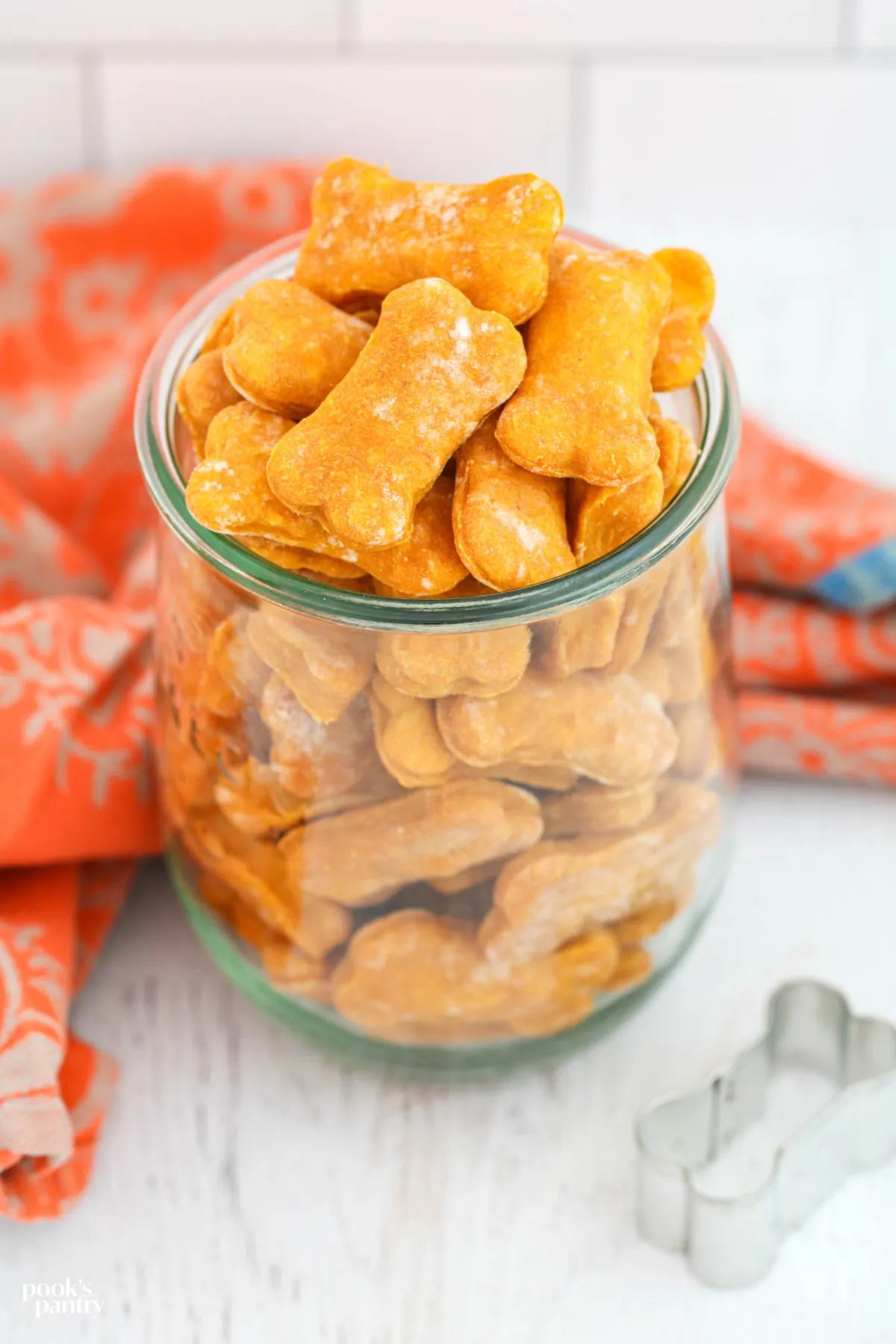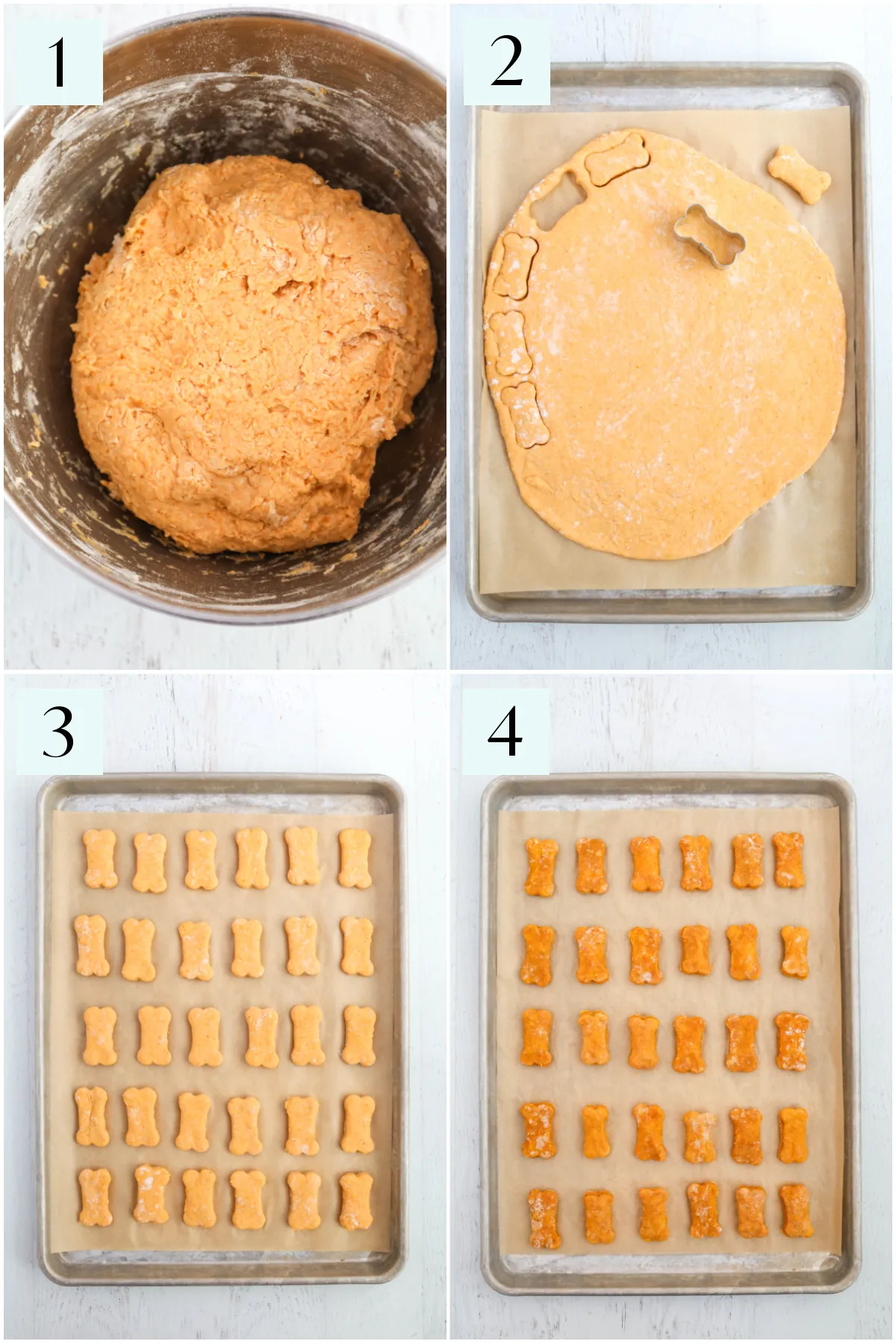Welcoming a dog into your home brings immense joy, but as our furry friends age, their needs change, especially when it comes to their diet. Many senior dogs, or those with dental issues, struggle with hard, crunchy treats, making it difficult for them to enjoy a simple reward. If you’re searching for Soft Treats For Dogs With No Teeth Recipes that are both delicious and easy to make, you’ve come to the right place. This guide provides a fantastic, simple recipe that ensures your canine companion can still savor a tasty snack without discomfort.
This homemade dog treat recipe is crafted with just four wholesome ingredients, taking less than 30 minutes from start to finish. We’ll share variations, substitutions, and helpful tips to make sure you achieve perfect, soft treats every time. These soft pumpkin treats are perfect for older dogs or dogs with dental issues, providing a gentle chewing experience that won’t strain their sensitive mouths. They are also wonderfully low in fat, making them an excellent choice for less active senior dogs. For more options, consider exploring our soft peanut butter dog treats recipe for another soft and appealing option.
Why Soft Treats are Essential for Dogs with Dental Issues
Dogs, particularly as they get older, can experience a variety of dental problems, from missing teeth to gum disease, making hard treats a painful and often impossible snack. Providing soft treats is crucial not only for their comfort but also for their overall well-being and happiness. When a dog struggles to chew, it can lead to frustration and a lack of appetite, impacting their enjoyment of food.
These specific soft treats are designed to be gentle on sensitive gums and provide an easy-to-chew texture. Many dog owners, including myself, have found immense relief in recipes like this. For instance, when my own dog, Sugar, had several teeth removed, I found great success by making these treats and tearing them into smaller pieces. This ensured she could enjoy them without any discomfort, making snack time a positive experience despite her dental challenges. It’s a small change that makes a big difference in their quality of life.
 A glass jar filled with soft pumpkin dog treats, with a soft orange towel in the background.
A glass jar filled with soft pumpkin dog treats, with a soft orange towel in the background.
Understanding the Dough: Easy and Forgiving
Creating homemade dog treats should never be a stressful endeavor. This particular dough for soft pumpkin treats is wonderfully soft and pliable, making it incredibly easy to work with—even for novice bakers. Its forgiving nature means you don’t have to be a master chef to get excellent results. We all want to provide the best for our pets without turning it into a complex kitchen ordeal.
If you find that the dough shrinks back a bit while you’re rolling it, a simple trick is to cover it with a clean kitchen towel and let it rest for a few minutes. This allows the gluten to relax, making it easier to roll out evenly. While this rarely happens with this specific recipe, it’s a handy tip to keep in mind. Once baked, these soft pumpkin treats will puff up slightly and retain their delightful softness. The addition of applesauce helps to achieve a moist texture and a hint of natural sweetness, making them irresistible to dogs. Plus, making DIY dog treats is significantly less expensive than buying store-bought options, and you have complete control over the ingredients, ensuring only the best for your beloved pet. You might also be interested in other easy-to-make options, such as no bake dog treats without peanut butter.
The Simple Ingredients for Soft Pumpkin Dog Treats
These “pumpkin puff treats” are made with common pantry staples, meaning you likely have most, if not all, of these ingredients in your kitchen right now. The simplicity of the ingredient list ensures you can whip up a fresh batch whenever your pup deserves a special reward.
 Four simple ingredients for pumpkin dog treats arranged on a white background.
Four simple ingredients for pumpkin dog treats arranged on a white background.
Here’s what you’ll need:
- Canned Pumpkin Purée: This is the star ingredient that keeps the treats incredibly soft and moist. Make sure to use pure pumpkin purée and not pumpkin pie filling, which contains added sugars and spices that are unnecessary and potentially harmful for dogs. You can also substitute fresh baked pumpkin, butternut squash, or sweet potato if you prefer.
- Applesauce: Working in harmony with the pumpkin, plain applesauce adds extra moisture and helps maintain the soft texture of the baked treats. Always opt for unsweetened applesauce with no added sugars or artificial ingredients.
- Egg: A large egg acts as a binder, providing stability to the dough while contributing additional moisture.
- Flour: Regular all-purpose flour works perfectly for this recipe. However, you have the flexibility to swap it for whole wheat flour for added fiber, or any gluten-free flour alternative if your dog has sensitivities. For a specific variation, check out our pumpkin dog treats recipe no peanut butter.
Step-by-Step Guide: How to Make Soft Dog Treats
Making these soft pumpkin treats is a breeze! Follow these simple steps to create a batch of delightful, gentle snacks for your canine companion.
 Step-by-step photos illustrating how to make soft pumpkin dog treats for senior dogs.
Step-by-step photos illustrating how to make soft pumpkin dog treats for senior dogs.
- Preparation: Begin by preheating your oven to 350°F (180°C). In a medium mixing bowl, whisk the large egg until it’s light and foamy. Then, add the applesauce and canned pumpkin purée. Mix these wet ingredients thoroughly until well combined.
- Forming the Dough: Gradually add the flour to the wet mixture, stirring until a soft, uniform dough forms. The dough should be easy to handle but not sticky.
- Roll and Cut: Lightly flour your work surface and a rolling pin. Roll out the dough to approximately 1/8-inch thickness. Use a small cookie cutter (a 2-inch bone or round shape works well) to cut out your treats. Gather any dough scraps, re-roll, and cut out more treats until all the dough is used.
- Bake: Place the cut-out treats on a parchment-lined baking sheet, ensuring there’s a little space between each one. Bake for approximately 18 minutes, or until they are lightly golden.
- Cool: Once baked, remove the treats from the oven and let them cool completely on the baking sheet. It’s crucial that they are entirely cool before offering them to your pup to ensure their soft texture is set.
Storage and Freezing Tips for Freshness
Because these homemade dog treats are free from preservatives, proper storage is key to keeping them fresh and safe for your dog. Think of them like any other baked good; they require refrigeration to prevent spoilage.
To store your soft dog treats, place them in an airtight container and keep them in the refrigerator for up to two weeks. For longer storage, the freezer is your best friend. These treats can be frozen in an airtight container for up to three months. A smart strategy is to freeze the majority of the batch, keeping only a handful in the refrigerator at a time. This way, you can easily replenish your supply as needed, ensuring your dog always has fresh, soft treats available. Storing treats in the fridge is especially important in humid climates to prevent mold growth.
Final Thoughts on Homemade Soft Treats
Providing soft treats for dogs with no teeth recipes ensures that every dog, regardless of age or dental condition, can enjoy a delicious and comforting snack. These homemade pumpkin treats are not only easy to prepare but also give you peace of mind, knowing exactly what ingredients your furry friend is consuming. They are a testament to the fact that caring for our pets’ specific needs can be both simple and rewarding. For more ideas on nutritious meals and treats, consider exploring homemade dog food recipes vet approved for large dogs to cater to all your dog’s dietary requirements. Make these soft pumpkin delights a regular part of your dog’s treat rotation and watch them wag their tails with joy!
